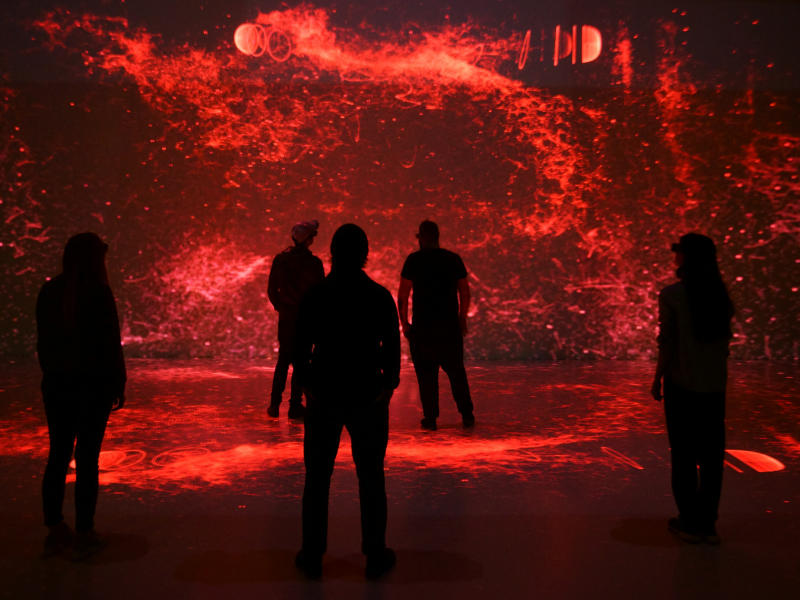Sound performances at Linhart Hall
Ludger Brummer: Spheres of Resonance | 8-channel composition (24 min)
Kosmas Giannoutakis: Bursty Exorbitance | 8-channel composition (8 min)
Julia Jasmin Rommel: Zwischenraum – Akustische Kartographie | 4K stereo AV composition (12 min)
Tadej Droljc: Singing Sand | AV composition (15 min)
The second concert set of the festival presents compositions by four artists researching varied and original modalities of controlling sound parameters.
Ludger Brümmer’s sound performance Spheres of Resonance is inspired by the sounds of the spatial and acoustic dimensions of virtual objects, which are defined by the algorithms of physical modelling. By changing the parameters, Brümmer pushes his models to their limits, into a state of self-oscillation. The resulting sounds shift the listener between the physical reality upon which the aforementioned algorithms are modelled and the aesthetics of the digital, which allows the sonic parameters to be perverted beyond their physical limits.
Bursty Exorbitance is a work by the artist Kosmas Giannoutakis that explores eruptive rhythms and instabilities using a custom-made generative feedback network with an integrated four-dimensional chaotic attractor, discovered by M. Ababneh from the Department of Mechatronics Engineering of the Hashemite University in 2017. The attractor is used as a modulator for the loops’ macro settings, while its visualisation controls the development of the composition according to the principle of graphic notation. The close interweaving of signal pathways and settings thus results in a uniform sound in a state of constant transformation.
Using the IanniX software in her work Zwischenraum – Akustische Kartographie, Julia Jasmin Rommel treats cartographic documents that were created according to the patterns of her everyday movements as graphic notation. Through the process of sonification, the spatial information encompassing this type of transitional and restless spaces has been given an additional temporal dimension. In this way, a continuous and temporal experience has been restored into an otherwise static cartographic trace.
The real-time audio-visual composition Singing Sand by Tadej Droljc is based on the programmed reciprocity of the visual and sonic image – of a swarm of particles in a virtual three-dimensional space and of granular synthesizers. By using physical algorithms, the parameters of the sonority thus influence the particles’ position, colour and movement in real time. This drives Droljc’s aim of constructing an integrated immersive and sensory-synaesthetic model of an AV performance.
Entrance fee: 9, 7* €
* presale / students & seniors on day of event
Production: Ljudmila Art and Science Laboratory, ZKM Hertz-Lab, Cankarjev Dom
